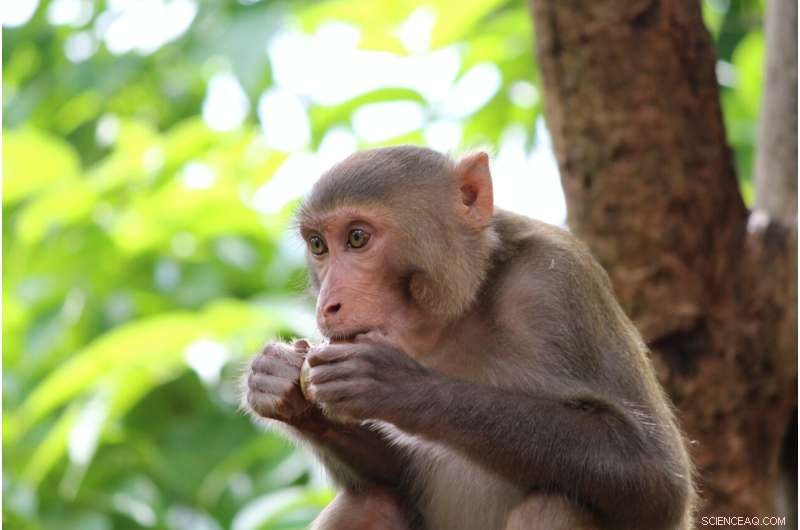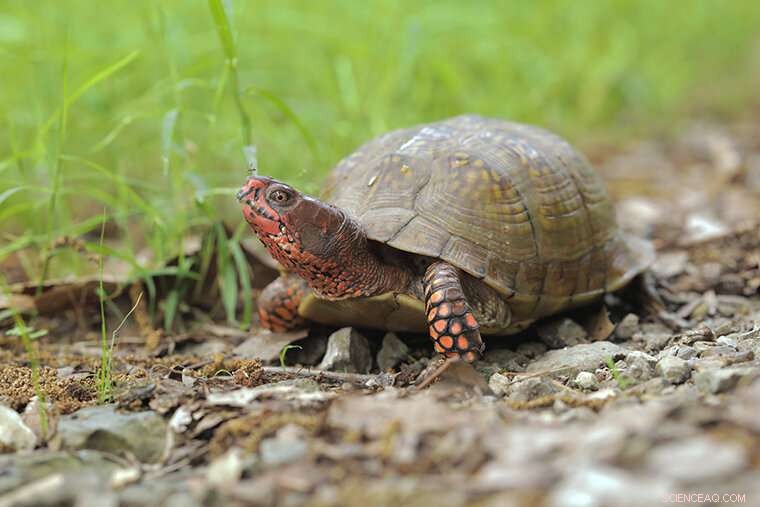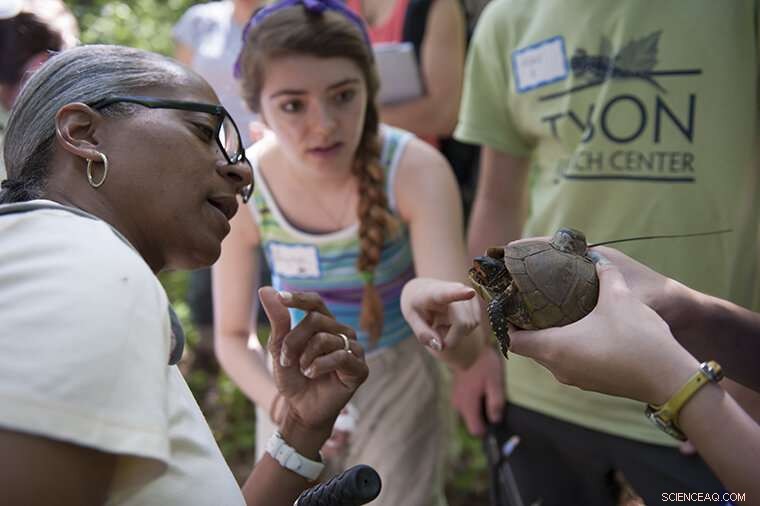
Credito:Unsplash/CC0 di dominio pubblico
Il microbioma è la raccolta di microbi che colonizzano un habitat, un corpo umano o altro. Grazie alla ricerca pionieristica sul microbioma presso la Washington University School of Medicine di St. Louis, le persone in tutto il mondo ora capiscono molto di più sul ruolo fondamentale dei microbi intestinali nella salute e nelle malattie umane.
Animali e piante si affidano anche a migliaia di microbi diversi per mantenerli in vita. Sebbene si sappia meno di queste associazioni, una nuova generazione di scienziati sta esplorando le relazioni tra un esercito nascosto di microbi e le creature che supportano e fortificano. Questi microbi di diversi ecosistemi (mDivE-STL) sono al centro di un simposio di ricerca organizzato il 3 ottobre dalla Living Earth Collaborative.
In diversi istituti di ricerca in tutta St. Louis, i ricercatori studiano i microbiomi umani e non umani. Questo simposio è stato organizzato per aiutare a promuovere una comunità di ricercatori che studiano diversi sistemi microbici, beneficiando al contempo della grande forza locale nell'esperienza del microbioma umano.
Prendi, ad esempio, i ricercatori che studiano le scimmie urlatrici nere (Alouatta pigra) nell'America settentrionale e centrale. Queste grandi scimmie carismatiche sono famose per fare uno dei richiami più forti nelle foreste tropicali del Messico, del Guatemala e del Belize.
In quanto erbivori che vivono sugli alberi, le scimmie urlatrici nere consumano principalmente foglie, fiori e frutti di alberi e vite. Poiché mancano di enzimi in grado di digerire la cellulosa, il carboidrato che compone la parete cellulare delle foglie, le scimmie urlatrici nere fanno affidamento sulla fermentazione innescata dal microbiota intestinale per ottenere l'energia di cui hanno bisogno da questi alimenti.
L'intero processo potrebbe essere molto più dinamico di quanto si pensasse in precedenza, secondo la ricerca degli scienziati della Washington University. Stanno cominciando a emergere prove che i cambiamenti microbici intestinali legati alla dieta tamponano l'energia e la disponibilità di nutrienti per animali come le scimmie urlatrici nere.

Una tartaruga selvatica al Tyson Research Center, la stazione sul campo ambientale della Washington University. Con il supporto della Living Earth Collaborative, i ricercatori hanno ampliato il St. Louis Box Turtle Project per caratterizzare i microbiomi nativi delle tartarughe a tre dita. Credito:Thomas Malkowicz/Università di Washington
Elizabeth Mallott, assistente professore di biologia in Arti e scienze, usa la metabolomica per esaminare come il metabolismo microbico risponde ai cambiamenti di cosa e quanto mangiano i loro ospiti. Di recente ha condotto uno studio con una popolazione di scimmie urlatrici nere selvatiche che ogni anno vivono tre stagioni distinte che influenzano la loro dieta:una stagione umida, dominata dalla frutta; una stagione secca, dominata dalle foglie; e una stagione secca, dominata dalla frutta.
"Possiamo vedere che quando le scimmie mangiano più di un nutriente specifico, i microbi intestinali metabolizzano maggiormente quel nutriente", ha affermato Mallott, primo autore della ricerca pubblicata su Molecular Ecology . "But beyond that, what was exciting is that we could look at the interactions between the microbes and the metabolites in different seasons, including seasons where the monkeys were limited nutritionally or energetically by the food that was available in their environment."
Microbes tend to compensate during lean times, Mallott discovered, prioritizing functions that provide more nutrients to the host. But that system falls apart when food availability becomes truly limited.
"Then the microbes seem to be scrambling. They just try to steal as many nutrients from each other as possible," said Mallott, who also looks at how environmental variation impacts the gut microbiome in humans.
Microbes could benefit species conservation
Studying the microbiomes of animal populations that thrive in the wild is important because it may provide researchers with candidate microbes and microbial consortia that could be used to improve disease resistance, nutrient absorption and ultimately the fitness of threatened species or animals that reside in degraded habitats.

Visitors take a close look at “Parkey,” a turtle tagged and tracked as part of the St. Louis Box Turtle Project. With support from the Living Earth Collaborative, researchers have expanded the project to characterize the native microbiomes of three-toed box turtles. Credit:Sid Hastings / Washington University
This is true for mammals including black howler monkeys, but also reptiles such as the Missouri native box turtles—including the ones that the Saint Louis Zoo Institute for Conservation Medicine has studied at two sites in the St. Louis area since 2012, as part of the St. Louis Box Turtle Project.
With support from the Living Earth Collaborative, researchers are expanding that effort to include characterizing the microbiomes of three-toed box turtles and exploring how they vary within and between populations. Scientists from the laboratory of Fangqiong Ling, an assistant professor of energy, environmental and chemical engineering at the McKelvey School of Engineering, are collaborating on this turtle project to integrate microorganisms into the wildlife conservation toolbox.
"In general, wildlife microbiomes—the bacteria, archaea, protists and viruses that are found inside and on the body—are an understudied aspect of biodiversity conservation," said Sharon L. Deem, director of the Institute for Conservation Medicine and of the Saint Louis Zoo WildCare Institute Center for Chelonian Conservation.
Deem and Mallott are both scheduled to speak at the Oct. 3 research symposium, which was organized by Ling, Gautam Dantas, a professor of pathology and immunology at the School of Medicine, and Jonathan Losos, the William H. Danforth Distinguished University Professor of biology in Arts &Sciences and director of the Living Earth Collaborative.
About half of the microbiome research that will be presented relates to animals, plants and the environment, while the rest is more closely related to human health.
"You can't really understand the human microbiome and its interesting dynamics if you don't consider it in the context of the environment," said Dantas, who describes the microbiome research in his laboratory as being about 90% focused on humans and 10% in other habitats, including plants, soil and the built environment. "Even if you're purely focused on the microbes in humans, you're not going to be able to explain the important dynamics of those of that ecosystem if you don't understand the interactions in microbes within and on the body, and where those microbes come from." + Esplora ulteriormente